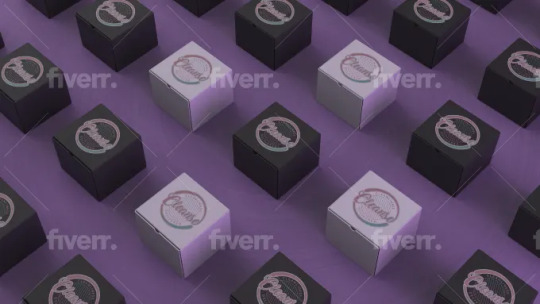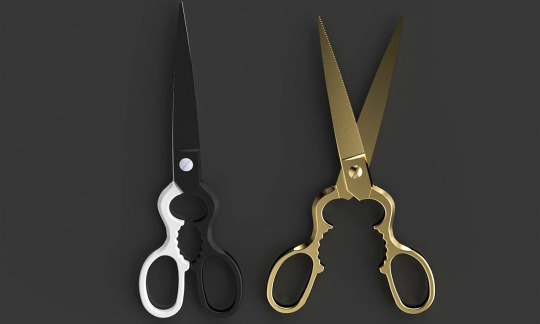#Outsourcing tutorials
Explore tagged Tumblr posts
Text
⋆.˚ 𖥔˚ A LITTLE FUCKING REMINDER FOR YOU.



˚ ✦ . . ˚ . . ✦ ˚ . ★⋆.
GIRL. No one—and I mean no one—can manifest your reality but you. Not your fave LOA blogger, not your bestie, not the girl on TikTok saying “like and comment to claim,” not that cute void success story post you reblogged 7 times. You’re not gonna wake up in your dream life because of you following what others tell you. Stop handing over your power like it’s a group discount.
You affirm for you. You shift your mindset for you. You tap into the void for you.
You create your rules, your world, your reality—and no one else can walk that path but you. Waiting for someone to carry you there? Baby, the only person who can pick you up and drop you into your dream life is the same person reading this right now. Yeah, YOU.
Of course it’s completely okay to look up to people, get inspired, and find comfort in the community. But bitch, if you’re sitting around hoping someone will “tell you exactly how” or manifest it for you… you’ve missed the entire point. This isn’t a tutorial video with a guaranteed outcome if you follow the exact same steps in every damn method that different LOA bloggers share. This is your reality, and you are the only one who gets to write it.
So stop outsourcing your damn power. You already have it. You’ve had it the entire time. The void? Already within you. The manifestations? Already done. The version of you who has everything? Already exists. You just have to stop waiting for permission and step into it. Fully.
A little reminder to you: You don’t need them. You never did. It was always just you. And that? That’s the most powerful part.
˚ ✦ . . ˚ . . ✦ ˚ . ★⋆.



#loablr#loassblog#loassumption#law of assumption#neville goddard#loa blog#manifest#void state#law of the universe#law of attractionl#law of attraction#loa advice#loass#loass states#loassblr#master manifestor#loa tumblr#manifesting#manifestation#self concept#law of abundance#law of manifestation#mercifulstate#voidblr#subconscious#the universe#shifters#shiftblr#reality shifting#shifting community
377 notes
·
View notes
Text
I think the most interesting insight I've gotten from the various QnAs is that, although they're the biggest fish in the pond, the Old Faith never hit "religion" status. Society at large still regards them as just another cult.
Society might not even recognize them as actual gods. Or if they do, they just don't... care? Berith, Plimbo, Rakshasa, Helob, Shrumy, even the Lighthouse Keeper before we help him out. They don't treat us with any particular reverence or authority. Plimbo outright says he's not interested in worshipping us. Rakshasa tries to fight us if we provoke him. Helob regularly makes implied threats towards our followers.
There's just an overall lack of "hey I'm talking to a powerful, divine being rn, and I should act like it." Anyways that's not what this ramble is about. Back on topic.
Jojo made it seem like the Bishop's individual cults still operate on the same scale as the Lamb's, so they realistically can't be that much bigger. They spend the majority of their day tending to their cult and apparently don't have a lot of free time. The exact wording was that they'd be a little faster at it than Lamb, due to years of experience.
Which means their cults have yet to hit a level of self-sufficiency. They either can't or don't trust any of their followers enough to outsource most work. Followers farm. Followers fight and engage in conquest. And the Bishops presumably cook, clean, bless/inspire/intimidate, and build the structures they need (within their limitations).
The Bishop's never truly combined their cults to be "the cult of the old faith". And the only time we ever see direct worship of the Old Faith as a unified concept/group is in the tutorial. Kallamar's cult is Kallamar's cult. Leshy's cult is Leshy's cult. etc, etc. There is no sharing of faith/followers/resources. And if it takes them all day to manage their cults...
...it would explain why Shamura's cult fell into ruin after their injury. Their siblings don't have time to help them. Jojo mentioned that Shamura's followers stuck with them even though they stopped being able to fully provide for them. Partly out of loyalty, partly out of fear.
Makes me wonder about the actual state of their cult grounds. I don't think they're as grand as one would first think.
55 notes
·
View notes
Text
I have some clothes I’m needing to hem the bottoms and take in the waist and let out the waist. I have basic needle and thread and an old sewing machine. Any tips on other stuff I need or good tutorials? I’m using The Google but figured I’d outsource to my friends. @nerdyqueerandjewish perhaps?
Appreciate any help! I’m a little short on money so I’m trying to save a bit by doing the work myself.
52 notes
·
View notes
Text
This time, I'm tired and lazy. This time, I'm going to attempt to outsource a thing.
If I sent you this image*, would you be able to make the background transparent in photoshop (or get rid of it entirely - what are words) and then send it back to me as a png file? I can also send you the photo that I want to paste it over if that's easier.

*well, not this exact one, but that would be spoilers
(Yes, I will sit down with a tutorial and figure it out eventually. But for now I'm being productive and don't want to halt my flow lol.)
#simply lilac#sims 4 help#i have two so far#and should probably finish playing the intro round#in case there's more lol
16 notes
·
View notes
Text
"I created and customised this doll!!!"
> doll was sculpted by someone else
>relative used his work machine to do this part
>a friend did this other part
>yet another part is commissioned
Work went into this doll no doubt, but yours was mostly faceup and editing the video (unless you outsourced the video, too)
Yes I'm just bitter and envious. I, and most people, will never have access to these resources, so I'm not interested in these "tutorials". But youtube still shoves them on my page no matter how many times I asked to not be recommended that content, because that's what's popular...
~Anonymous
12 notes
·
View notes
Note
How do you get the fabric printed so beautifully? :O is it outsourced or is it something that can be done on a home printer? Or maybe you paint it by hand?!!?!
i do it myself at home!
it´s a bit more complicated than doing it with a regular printer but it´s doable. you basically need to fill a printer with a special ink and print it on special transfer paper. than put that paper into a heat press with the fabric so the pigment gets vaporized and pushed into the fibres!
makeshiftwings has a great tutorial about it on their website
#i don´t really talk about it a lot but i do fully design my patterns from scratch including the designs printed on the fabric#basically if it says “custom printed” in the product description i did it in studio#it´s more work than getting it printed somewhere else and i´m limited in sizes but it´s worth it for being able to controll my own quality#also i´m obsessed with printing on colorful fabrics instead of white whenever i can
80 notes
·
View notes
Text
A thought on Botw's items
So, first of all, if you were left dissatisfied and somewhat angry by Totk, go watch this wonderful video and enjoy your catharsis:
youtube
So, after watching this my mind started to fix upon this godforsaken series again and, a thought about how the wild saga handles things and why.
Now, i'm not a seasoned game designer, i don't know shit on how to deliver these massive projects, and i'll admit i haven't done proper research like in interviews, manuals, artbook, ecc., this is all very much a stream of consciousness.
What i reflected on is how many of us struggled to really bite deep with criticism into the structural exploration systems of this games, because it apparently "works", and in a somewhat elegant and cohesive way. It's much more difficult to critique the decision of adding shrines, of the dungeons, of the pad tools, of the rewards, because it easily justifies itself with the various "time limits, sacrifices needed to be made, streamlined exploration" and so on; it's much easier instead to go to the throat of the story, or characters, or the durability, because it's a much more direct frustration i think.
But then again, thinking about Botw: was giving the player all of their tools right away really the only right decision?
I honestly think that having the player roam around hyrule, letting them explore and find obstacles for which the tools are required, and then giving them said tools, would've been much better. You would accumulate small frustrations here and there, places to return to, for which you would use those pins in the map, and then you'd have the satisfaction of having finally found the solution to your troubles and a unique reward from wherever you might've taken them.
"Sure", you might say, "but then all the major dungeon and "story areas" should take into accoutn wether you have them or not". ....Yes. what's the problem in that? maybe a character, like one of the descendant could say something along the lines of "if only we had a way to freeze the water to resolve this issue that i feel might be present in the divina beast" or similar, that way the beasts would be centered around fleshing out one mechanic. i guess that might make them a bit more monotonous, but i think not; they are already kind short and boring, they might as well be a a dungeon designed around fleshing out just one of your tools in a satisfying way.
That to me would've resolved a good amount of issues i have with it with the game already, because part of the joy of exploring, at least in the first like 10 to 20 hours, would've been the anticipation of finding a tool and to finally use it! and i'd have something more memorable to remember while roaming around than just pretty sunsets.
Also, this would resolve the B I G issue i have with the intro of both of this game, of it being an unskippable slog. If you remove all of the tutorial aspect out of it, and outsource it to a later, further away area of the game, you can reduce all the time the plateau takes out of you to like, an introduction to combat, crafting, effects and that's it, you're free after that.
plus i always found stupid that the game won't let you have the paraglider before finishing it. like, just leave the tutorial there if someone wants it, but le me find the paraglider as an object and then let me go down, it's not an essential item, just a convenient one; plus, if players went around hyrule without the paraglider, you could just remind them in other ways later on that they might find one on the plateau, or let them find another one in other areas of the game. that could've been fun: "where did you find the glider? here? really? wow, these devs really thought of everything, i found it there instead, and mike down south".
i dunno, i just don't want to think about botw as the only correct way of doing this kind of game.

#tornio#tornioduva#torniod#torniotalk#zelda#zelda fandom#legend of zelda#the legend of zelda#zelda totk#loz#botw#loz botw#critique#nintendo#Youtube
12 notes
·
View notes
Note
omg ive been wanting to get into pottery/ceramicwork do you have any tips for how to get started besides taking classes
hi so i’m not sure if you mean throwing or hand building , but i do have some sad news for you… you do kind of need to take classes. economically it’s the most smart. kilns range from like $1k-50k. they’re expensive. wheels are also, very expensive. u can find them used on facebook market place tho. materials and tools, also expensive.
theoretically you could buy a shitty $100 wheel from amazon that’s like 2x3 feet with a lever and not a pedal, buy your own clay and materials that would prob be around $80 starting out (and then $30-50 for every bag of clay) and then take your stuff to a studio and pay $10 each to bisque fire, and then buy your own glazes for like. $20-30 per glaze, and then drive it BACK to a commercial studio and get it fired for like $10 each
there’s also the whole safety aspect of it. you need a place where you can safely use clay without the whole… silicosis/potters lung ordeal. you need to be able to have it separate from any food, and also be committed to cleaning the fuck out of it every-time because pro longed exposure to clay dust will actually (fun fact!) give you lung cancer! yay!
so here’s what i’d recommend you’d do. if you live in the us, find a ceramics class at a community college. it might be a bit farther than you’d like, or maybe you luck out and it’s really close. if you live in state, you’re getting way more bang for your buck. one of my friends at my old school had florida pre paid and paid only $80 for a semester long class. (and seniors got to take it for free!) but, it you can’t afford it, most colleges do offer payment plans. regular old commercial ceramics classes do not offer payment plans. do not take it for credit: AUDIT the class. you also, will be able to withdraw from the class and get your money back if you decide after a week that it’s not for you.
taking a class is just more preferred because ceramics has such a high material cost. having a home studio is expensive! and then there’s the fact that you don’t have to rely on youtube tutorials, and are actually taught by a professor who def knows what they’re doing. and plus, the community i gained from taking these classes truly made me fall in love with ceramics. talking with people, sharing tips and advice, asking for help, helping out in the studio, i learned so so so so much in a short amount of time and made friends i’ll never forget :)
i know there are prob other reasons why’d you not want to take a class. but on some level even in just the starting phase you would have to outsource the firing of your pieces. if you wanted to, you could just buy clay and and hand build and then dry it out and then reclaim it over and over again without firing, but you’d be missing out on a huge part of ceramics (glazing, my favorite part)
if you want u can always dm me if you have any other questions
2 notes
·
View notes
Text
did yall ever have teachers in highschool/college that made the point of like, "cheating might get you the grade immediately but it'll hurt you down the line"
as in, like, if you start cheating with fractions in math, you won't be able to do anything with fractions yourself down the line and it'll snowball and get worse and worse and harder, so it'll be better in the long run to just struggle and work it out
or if you always look up book analysis instead of doing it yourself you'll never get good at analysis
that's how i feel about using chatgpt for minor shit. "i just have it write emails for me!" LEARN HOW TO WRITE EMAILS. "it helps me make a grocery list!" LEARN HOW TO MAKE A GROCERY LIST. "it helps me outline for writing!" LEARN HOW TO MAKE AN OUTLINE.
you are hurting yourself, your learning and your capabilities by outsourcing this shit. and when chatgpt goes down-which it has before-you won't have the skills or practice to do it yourself. figure it out. look up a tutorial on youtube. ask a librarian. talk to someone in your community. figure it the fuck out.
3 notes
·
View notes
Text
Also also I decided that Peter 3 is the best at making his own suits. I don't know or remember what the Canon source for Andrew or Tobey's final form spidey suits was, I saw a clip where Tom's was made by Stark. I think (in my headcanon) Peter 2 eventually outsourced most of his suit making (his MJ was a stage actor so maybe he picked up some connections there- NYC has a good garment district) but Peter 3 takes it on like a hobby to the max. He's watching tutorials, he's sourcing quality supplies... I decided he developed a modified web-fluid substance to draw the raised web patterns that feature on the suit, they're not as strong with tensile strength but they bond with the base fabric permanently and let him draw smooth lines and curves. Some people paint Warhammer figures, Peter 3 is detailing his super suit for hours and adding magnet snaps to finish his hidden waist zippers and keep the lines clean.
4 notes
·
View notes
Text
How to Start a Podcast | Complete Step-by-Step Guide for 2024- Riverside FM
Part 1 l Part 2 l Part 3 l Part 4 l Part 5 l Part 6 l Part 7 l Part 8 l Part 9 l Part 10 l Part 11
The twelfth article Sydney gave me is from riverside FM, which is a recording and editing site for podcasters.
This article has a video accompanying it.
The article lists ten steps.
Plan your podcast
Think about why you want to make a podcast.
Choose a niche topic, with a linked article with ideas of categories. I say categories and not niches because they're 'true crime,' 'health and fitness,' 'business,' and others like that.
Think about what you're both knowledgeable and passionate about, who your target audience is, how you can help that target audience, what gaps you can fill in the podcasting market, and what will make your podcast stand out.
This article gives you over a hundred topics to think about, which I actually found interesting. Some of the really grabby ones I saw were 'day in the life' where you interviewed everyday people, 'mystery theme' where each episode in a season is seemingly unconnected or only loosely connected before you reveal the underlying theme at the end, a music podcast where you take calls or emails and suggest new artists based on what they already listen to, a scavenger hunt where you ask your listeners for specific audio cues both spontaneous and planned, a sports podcast about the history of that sport, interviewing kids, riddles, different personal challenges like how long you can go without watching TV, flashbacks to old trends and inventions that didn't stand the test of time, a poetry podcast, and where a quote is from. For the last one, all I could think of was 'who's that pokémon?'
Choose a name. This article goes into more detail.
Choose a format. This article lists descriptions of popular ones.
Structure your podcast. This includes length and schedule.
Sequence your podcast. Keep to a set order- hook and intro, main body, and conclusion. Now that I'm writing that out, I'm reminded of learning how to write an essay in grammar school. Hamburger poster showing the buns as introduction and conclusion, and the meat as the body, anyone?
2. Set up equipment
A microphone is a must, as are headphones and a computer.
3. Software
Both recording and editing software are needed for a podcast.
4. Prepare your first episodes (two or three is a good start)
Schedule and prepare interviews, if you're going that route. If you do, keep a record of who you've reached out to so you don't double dip, send them an approximate interview length so they know what to expect, plan your interview questions and put them in an order that makes sense, ask unique questions, and keep the questions tailored to what your audience wants to know
If you script the episodes out, this is a handy article with templates to help you out
Test your equipment and software so you know what buttons to press
5. Record
If you're recording in person, using a mixer for multiple people is your best bet
If you're recording remotely, you'll need software and to send your guests guidelines on how to set it up
For a hybrid setup, where some of your guests are present and some are remote, you'll need to think more about how to record. This video will be helpful in that respect.
6. Edit
You're going to need software to do this if you're doing it yourself, or an editor if you're outsourcing. Whichever way you choose, there are some basic things to keep in mind- narrative (meaning make sure everything flows naturally from one thought to the next), spice it up (any sound effects or music), do the detail work (background noise), export, and create smaller promotional bites. This article gives more of a tutorial.
7. Artwork
This video goes into creating artwork. Keep in mind a few things- make sure the art represents the podcast clearly, think about what will attract your audience, keep the dimensions in line with directory guidelines, and don't overwhelm the image with detail.
8. Publish
Once you're done, you'll need a hosting site. Like I've said in previous posts, you need an RSS feed to submit to directories, and the hosting site creates one for you.
Create show notes and an episode description- think of a hook to get them to read more, keep them clear and short, and incorporate keywords naturally
Get your podcast on a directory from your hosting site.
9. Promote and monetize
Promotion:
Use search engine optimization (SEO) wisely
Make teasers and share them on your social media
Make a podcast website
Join a network
Monetize:
Get sponsors
create subscription tiers/ask for donations
Make merchandise from your podcast
Affiliate
10. Assess
Keep an eye on data and adjust your course accordingly, depending on what brings in more viewers. But, as I've cautioned in previous posts, don't get too hung up on numbers.
2 notes
·
View notes
Text
Becoming a Google Ads expert and monetizing that expertise can be a rewarding venture.

Here's a step-by-step guide to help you achieve that:
1. Learn Google Ads Fundamentals:
Start by familiarizing yourself with the basics of Google Ads, including its various campaign types, targeting options, ad formats, bidding strategies, and performance metrics.
Take advantage of Google's free resources, such as the Google Ads Help Center, Skillshop (formerly Google Academy for Ads), and YouTube tutorials.
2. Get Certified:
Earn Google Ads certifications by completing the Google Ads certification exams available on Skillshop. This will validate your expertise and enhance your credibility as a Google Ads professional.
Consider pursuing additional certifications, such as Google Analytics or Google Marketing Platform certifications, to broaden your skill set and better serve your clients.
3. Gain Hands-On Experience:
Practice creating and managing Google Ads campaigns for yourself or volunteer to work on campaigns for friends, family, or nonprofit organizations.
Experiment with different campaign objectives, targeting options, ad creatives, and bidding strategies to understand their impact on campaign performance.
4. Specialize and Focus:
Identify a niche or industry that interests you or where you have relevant experience or expertise. Specializing in a specific niche will help you stand out and attract clients looking for specialized knowledge.
Consider specializing in specific types of campaigns, such as search ads, display ads, video ads, or shopping ads, based on your interests and strengths.
5. Build Your Portfolio:
Create a portfolio showcasing your past work, including successful Google Ads campaigns you've managed and the results achieved for your clients.
Highlight key metrics such as click-through rates (CTR), conversion rates, return on ad spend (ROAS), and cost per acquisition (CPA) to demonstrate your effectiveness as a Google Ads expert.
6. Network and Market Yourself:
Join online communities, forums, and networking groups related to digital marketing and Google Ads to connect with potential clients and collaborators.
Leverage social media platforms such as LinkedIn, Twitter, and Facebook to showcase your expertise, share valuable insights, and engage with your target audience.
Create content such as blog posts, case studies, or video tutorials to establish yourself as a thought leader in the field of Google Ads.
7. Offer Services and Monetize Your Expertise:
Start offering Google Ads management services to businesses or individuals looking to improve their online advertising efforts.
Consider various monetization strategies, such as charging clients a flat fee or a percentage of ad spend for managing their campaigns, offering consulting services, or providing training workshops or webinars.
Explore opportunities to scale your business by outsourcing tasks, hiring a team, or partnering with other professionals to expand your service offerings.

Wrapping up
By following these steps and continuously honing your skills, you can become a sought-after Google Ads expert and build a successful career or business helping clients achieve their advertising goals on the Google Ads platform.
2 notes
·
View notes
Text
3d product renderings and mockups

It seems like you're looking for information or assistance with 3D product renderings and mockups. Creating 3D product renderings and mockups is a crucial step in the design and marketing process for various industries. Here's some information to help you get started:
1. Software for 3D Rendering:
Blender: A powerful and free open-source 3D creation suite.
Autodesk Maya: Widely used in the film and video game industry.
Cinema 4D: Known for its intuitive interface and powerful capabilities.
KeyShot: A standalone 3D rendering and animation application.
2. Creating 3D Models:
CAD Software (Computer-Aided Design): Use software like AutoCAD, SolidWorks, or Rhino to create accurate 3D models.
Sculpting Software: Tools like ZBrush or Blender's sculpting features are great for organic shapes.
3. Texturing and Materials:
Apply realistic textures and materials to your 3D model using UV mapping techniques.
Software like Substance Painter or Quixel Mixer can help create detailed and realistic materials.
4. Lighting:
Proper lighting is crucial for realistic renders. Experiment with different light setups to achieve the desired look.
Consider using High Dynamic Range Imaging (HDRI) for realistic environmental lighting.
5. Rendering:
Choose the appropriate rendering engine for your needs (Cycles in Blender, Arnold, V-Ray, etc.).
Adjust rendering settings such as resolution, quality, and output format.
6. Mockup Tools:
Adobe Dimension: Allows you to create realistic 3D mockups and product visualizations.
Placeit: An online platform that lets you create mockups with your designs on various products.
Mockup World: Offers a variety of free and premium mockups for different products.
7. Tutorials and Learning Resources:
Online platforms like Udemy, Coursera, and YouTube offer tutorials on 3D modeling, rendering, and mockup creation.
Join forums and communities like Blender Artists or Polycount for support and feedback.
8. Considerations for Product Mockups:
Understand the target audience and purpose of the mockup.
Pay attention to lighting, shadows, and reflections to make the mockup realistic.
Test the mockup on different backgrounds to ensure versatility.
9. Outsourcing:
If creating 3D models and renders is outside your expertise, consider outsourcing to professional 3D artists or agencies.
Remember to practice and experiment with different techniques to refine your skills. The field of 3D rendering is vast, and continuous learning is key to staying updated with the latest trends and technologies.




#shirts#shirt design#artist shirts#tees#tshirts#toby's beans#coffee cat#sundew farms#sunflower fox#sugarbritches#apple orchard#vintage logos#logo design#shop#merch#countrycore#farmcore#cottagecore#fashion#my art#horror#slashers#graphic design#the conjuring#the conjuring 3#the conjuring: the devil made me do it#scream#scream 1996#a nightmare on elm street#anoes
2 notes
·
View notes
Text
7 Steps to Develop an Exceptional Marketing Plan
An effective marketing plan is essential for every business seeking to achieve sustainable growth, foster loyal customers, and outperform its competition. Whether you are introducing a new product, entering new markets, or redefining your brand strategy, a good marketing plan serves as a strategic guide for success.
The following are 7 crucial steps to create an outstanding marketing plan that yields measurable results and delivers the highest ROI:
1. Define Your Business Goals and Objectives
The strength of any marketing plan begins with the realisation of what you aim to accomplish. Begin by establishing definite, quantifiable business goals. Do you want to raise brand awareness, drive leads, enhance sales, or enter new markets?
Establish SMART goals—Specific, Measurable, Achievable, Relevant, and Time-bound—to shape your marketing plan. For instance, "Boost website traffic by 25% within the next six months" is an objective that can be easily measured and tracked, and which can help guide your marketing strategies.
2. Know Your Target Audience
Knowing your target audience is essential to successful marketing. Create in-depth buyer personas with demographics, behaviours, preferences, challenges, and buying motivations.
Survey, examine your customers, and leverage tools such as Google Analytics and social media to gather valuable information regarding your target customers. The more certain your knowledge, the more effectively you can customise messages that speak and convert.
3. Perform Market Research and Competitive Analysis
A successful marketing strategy not only thinks about the customer but also the whole market environment. Conduct a SWOT analysis (Strengths, Weaknesses, Opportunities, Threats) to analyse your business and competitors.
Read about what your competitors are doing right and find areas in the market where you can fill the gaps. Analyse their content strategy, social media presence, SEO rankings, and advertising campaigns. This analysis enables you to differentiate your brand and place your products appropriately.
4. Develop a Unique Value Proposition (UVP)
Your Unique Value Proposition is the thing that differentiates you from competitors. It is the main benefit customers will receive from doing business with you.
Make your UVP brief, engaging, and customer-centric. For example, "We help small businesses grow faster through AI-driven marketing automation" explicitly mentions the value and customer segment. Use this message consistently in all your marketing materials.
5. Choose the Right Marketing Channels
Not all marketing channels are created equal. Select platforms based on where your audience spends time and what aligns with your goals. Common channels include:
Content Marketing: Blogs, e-books, infographics, and video tutorials.
Social Media Marketing: Platforms like Instagram, LinkedIn, Facebook, and TikTok.
Email Marketing: Newsletters and automated drip campaigns.
SEO and PPC: Optimise for search engines and use paid ads to drive traffic.
Influencer and Affiliate Marketing: Collaborate with people who can help reach more.
A multi-channel approach aids in making it more visible and interactive across the channels.
6. Budget and Resource Allocation
Create a realistic marketing budget that supports your objectives and accessible resources. Take into consideration costs related to content creation, advertising, software tools, personnel, and outsourcing.
Prioritise those activities that yield the greatest ROI. For example, if historical data indicates high conversion rates from email campaigns, invest more in email marketing. Utilise free or inexpensive tools where possible to make your budget go further.
7. Optimise and Track Performance
Developing a marketing plan is not a one-time task. To succeed, establish KPIs (Key Performance Indicators) that support your objectives—e.g., website traffic, lead creation, conversion ratios, and customer loyalty.
Utilise analytics tools such as Google Analytics, HubSpot, or SEMrush to monitor performance. Periodically check your metrics, determine what's working, and change your strategy accordingly. Ongoing optimisation keeps your marketing efforts relevant and effective.
Final Thoughts
A great marketing plan is not a checklist—it's a living, data-based map that responds to shifting market conditions and changing customer needs. With these seven steps—setting goals, understanding your audience, learning about the market, developing a UVP, selecting proper channels, budgeting effectively, and refining regularly—you position your business for long-term success.
Keep in mind, good marketing is not about being everywhere—it's about being where it counts, with the right message, at the right moment.
#MarketingPlan#MarketingStrategy#DigitalMarketing#BusinessGrowth#MarketingTips#ContentMarketing#SmallBusinessMarketing#MarketingGoals#BrandStrategy#MarketingSuccess#Marketing101#OnlineMarketing#MarketingExpert#MarketingIdeas#SocialMediaMarketing
0 notes
Text
10 Easy and Smart Ways to Save Money Without Feeling Deprived
Easy and Smart Ways to Save Money Without Feeling Deprived
Saving money does not necessarily mean sacrificing all the things you love. There is a way to spend less without sacrificing the little luxuries that make life simpler and nicer. Whether it’s that nice cup of coffee in the morning, movie nights with family, or just a warm home in winter, these things count. The good news? You don’t need to give them up to be financially smart. Here’s how simple decisions can make a dollar go further, without making life a constant compromise.
1. Grocery Smarts Go a Long Way
Although groceries account for a significant amount of the monthly budget, there are small changes that can add up to significant savings over time. Making meals ahead of time helps you avoid purchasing unnecessary items. Making a list before you shop helps you avoid impulsive purchases, particularly those that are close to the checkout line. Additionally, it's worthwhile to buy extra if something is on sale and freezer-friendly. Additionally, store-brand goods are less expensive and frequently have comparable flavors.
2. Cook at Home More Often
Dining out accumulates quickly, even when it’s merely takeout a couple of times a week. Cooking at home isn’t complicated. An easy meal like pasta with homemade sauce for tacos using pantry staples will cost far less than a restaurant meal. Experiment with larger batches and leftover use for lunch. It’s healthier and cheaper.
3. Consider Streaming Services
The majority of us live in households that pay for multiple streaming subscriptions, but only regularly watch one or two of them. Examine what is being used in reality. Some can be canceled and reintroduced later when you want to watch something. Most services allow you to pause or resume at any time. Another way to cut costs is to share a plan with family members or roommates, if allowed.
4. Purchase in Bulk, But Only If It Will Save You Money
Purchasing in bulk at warehouse clubs or even at regular supermarkets can save money on staples that are frequently used. Consider toilet paper, paper towels, rice, or snacks to send in school lunches. But be cautious, purchasing large amounts of something that you don’t regularly use can create waste. Use non-perishables or products that are frequently used.
5. Reduce Energy Costs
Energy costs can be decreased at home with simple changes that no one finds uncomfortable. Turn off appliances when not in use, lower the thermostat a few degrees, and replace incandescent lightbulbs with energy-efficient models. Cozy blankets and warm socks can help you stay warm during the winter without turning up the thermostat. Blackout curtains can help keep your house naturally cool in the heat.
6. Check for Discounts Before You Purchase
Before purchasing anything, from apparel to electronics, it’s worth looking for a discount. Numerous websites have coupons, and browser add-ons such as Honey or Rakuten can apply deals automatically at checkout. Subscribing to store emails might also include a welcome discount. It takes only a minute to look, and the savings can be substantial.
7. Use Generic Brands
Generic products typically provide the same function as name brands, whether they be cleaning supplies, medications, or canned goods. They are frequently made by the same businesses. You can save money on things you buy frequently if you give them a try.
8. DIY When You Can
Not all has to be outsourced. Whether it’s repairing something at home or ideas on how to decorate, there are loads of videos and tutorials available online. How to fix a dripping tap, how to repaint a room, or even crafting your own gifts can save money and be fulfilling too. Yes, some things are best left to experts, but plenty aren’t as tricky as they appear to be.
9. Set Spending Limits, But Leave Room for Fun
Budgeting doesn't have to be a penalty. They put you back in control instead. The "80/20 rule" suggests spending 80% on basics and saving or investing the remaining 20% to maintain balance. It's okay to indulge in a little want among those 80%. You stay in the zone and are less likely to overspend later on if you set aside a small amount of money for hobbies, weekend getaways, or coffee runs.
10. Use a Cash-Back or Reward Card Responsibly
Some credit cards offer cash-back or points for purchases you’re making anyway, like gas, groceries, or bills. When used wisely (and paid off each month), these perks can add up to real savings. Just be sure to avoid spending more just to earn rewards. The key is using them as a tool, not an excuse to swipe more often.
Saving Money Can Be Simple
Living comfortably on a tight budget does not equate to sacrificing anything. It all comes down to being astute and knowing where your money is going. Without making you feel as like you're cutting corners and saving every stage of the process, a little preparation here and there can have unexpected results down the road. These minor adjustments keep your wallet happier and your life more comfortable.
Ready to begin saving without sacrificing anything?
Simply start with one of these tips this week, and notice the difference at the end of the month.
The Prime Today
💬 Chat with Sales
Email: [email protected]
Phone:📞+91 9175756272
📞+91 9175756372
#MoneySavingTips#SmartSaving#FrugalLiving#BudgetingHacks#PersonalFinance#EasySavingTips#MoneyManagement
0 notes
Text
Discover How 3D Print Services and Cheap 3D Printer India Solutions Are Transforming Innovation
In recent years, 3D printing technology has emerged as a powerful tool across industries—from prototyping and manufacturing to healthcare and education. Businesses and individuals alike are reaping the benefits of rapid, cost-effective production using modern 3D printers. With increasing accessibility, more Indians are turning to 3D print services and exploring options for a cheap 3D printer in India to bring their ideas to life.
Why 3D Printing Is Gaining Momentum
3D printing, also known as additive manufacturing, creates physical objects by layering material based on a digital model. This process dramatically reduces waste, speeds up prototyping, and allows for the customization of products that traditional manufacturing struggles to offer.
Designers, architects, engineers, hobbyists, and students are now using 3D printing for projects ranging from miniatures and machine parts to architectural models and medical implants. The rising interest has spurred the growth of reliable and affordable 3D print services and a market boom for cheap 3D printer India options.
What Are 3D Print Services?
3D print services allow you to print a design without owning a 3D printer yourself. You simply upload your CAD file to an online portal or visit a local 3D printing center, choose your preferred material, and let experts do the rest. These services are ideal for those who need professional prints occasionally or want high-quality output without investing in expensive machines.
In India, the demand for professional 3D printing has surged across metro cities like Bangalore, Delhi, Mumbai, and Hyderabad. Companies offer services like rapid prototyping, industrial modeling, product design, and even small-batch production. Whether you're a student working on a science fair project or a startup developing a new prototype, 3D print services provide flexible, on-demand solutions.
Exploring the Market for a Cheap 3D Printer in India
While outsourcing printing to professional services is convenient, many hobbyists and startups prefer owning a machine for hands-on experience and long-term savings. The good news is that the Indian market offers a wide range of options for those seeking a cheap 3D printer in India without compromising on performance.
Entry-level FDM (Fused Deposition Modeling) printers are now available at affordable prices, starting as low as ₹15,000 to ₹30,000. Brands like Creality, Anycubic, Wanhao, and Indian-made Pramaan 3D have released budget-friendly models that cater to both beginners and advanced users.
These machines support common filament types like PLA, ABS, and PETG, and some even come with open-source firmware for customization. With online tutorials and active user communities, it’s easier than ever to set up and operate a cheap 3D printer in India from your home or workshop.
Benefits of Using 3D Print Services and Owning a Cheap 3D Printer
Both 3D print services and affordable personal printers offer distinct benefits, depending on your needs:
Advantages of 3D Print Services:
Professional Quality: Get access to high-resolution industrial-grade printers.
Variety of Materials: Choose from advanced resins, metals, and composites.
No Maintenance Hassle: Avoid the setup, calibration, and upkeep involved in running your own printer.
Expert Guidance: Collaborate with technicians who can help optimize your design for the best results.
Advantages of Cheap 3D Printers in India:
Affordability: Entry-level printers are budget-friendly and easily available online and offline.
Learning Opportunity: Great for students and makers to understand the nuances of 3D modeling and printing.
Creative Control: Make quick iterations and modifications in real time without relying on a third party.
Business Potential: Entrepreneurs can start small-scale manufacturing or offer local 3D print services in their area.
Who Can Benefit from 3D Printing?
The applications of 3D printing extend far beyond engineering and manufacturing. Here’s a look at some key users:
Students and Educators: Ideal for STEM education, science models, and project-based learning.
Architects: Use 3D printing for scale models, elevation designs, and visual presentations.
Healthcare Professionals: Print prosthetics, surgical tools, and anatomical models.
Artists and Designers: Bring creative ideas to life with customized jewelry, home decor, and wearable tech.
Entrepreneurs: Launch product-based businesses with minimal initial investment using a cheap 3D printer India setup.

Final Thoughts: Embrace the Future with 3D Printing
The 3D printing landscape in India is rapidly evolving. As awareness grows, both 3D print services and affordable home-use machines are making innovation more accessible than ever. Whether you want to prototype a new invention, create personalized items, or enter the world of digital manufacturing, now is the perfect time to explore your options.
Investing in a cheap 3D printer in India or partnering with a local 3D print service can unlock endless possibilities for your creativity or business. As technology continues to advance, those who adopt 3D printing today will lead the way in shaping the products and solutions of tomorrow.
0 notes